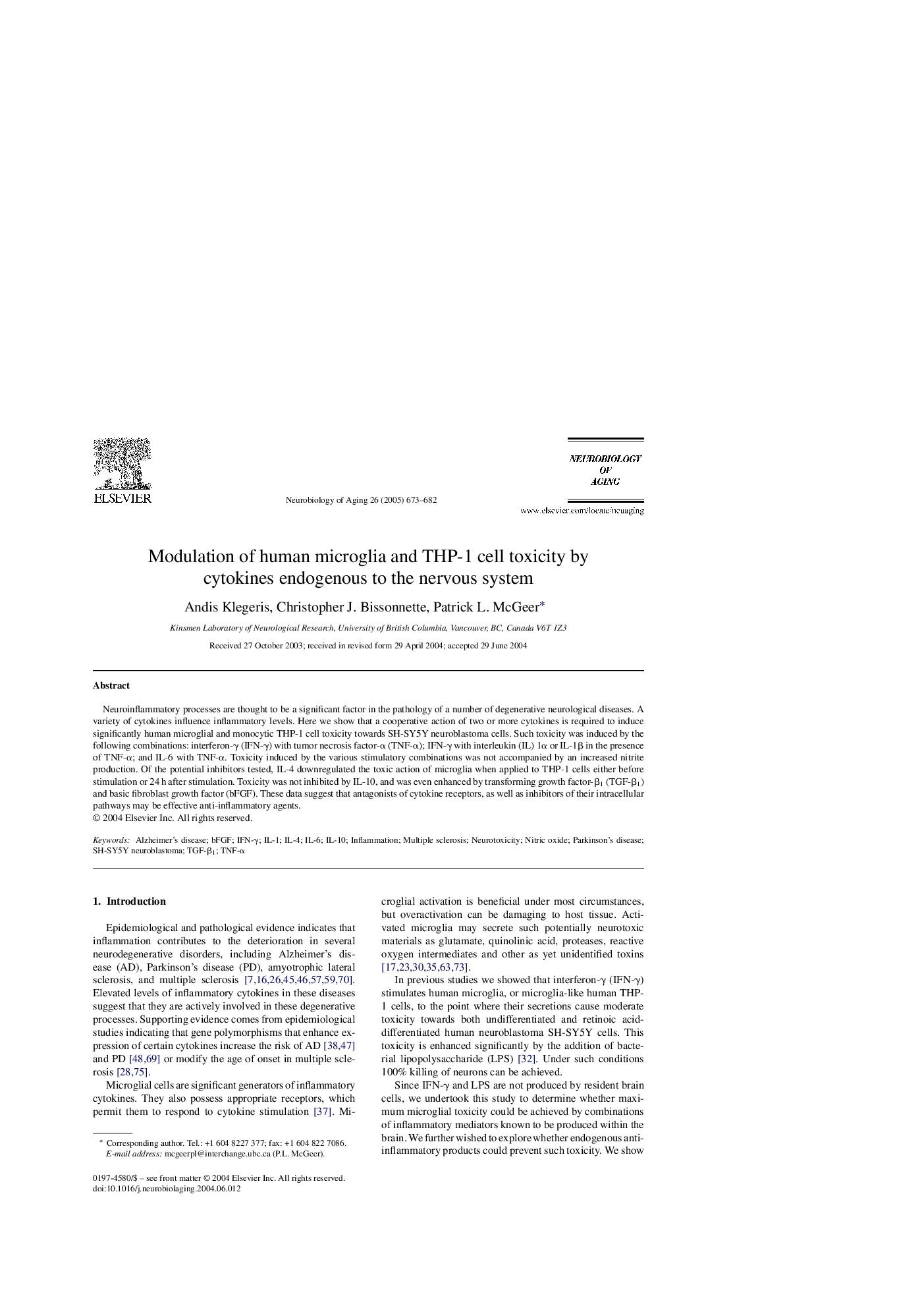| Article ID | Journal | Published Year | Pages | File Type |
|---|---|---|---|---|
| 9645107 | Neurobiology of Aging | 2005 | 10 Pages |
Abstract
Neuroinflammatory processes are thought to be a significant factor in the pathology of a number of degenerative neurological diseases. A variety of cytokines influence inflammatory levels. Here we show that a cooperative action of two or more cytokines is required to induce significantly human microglial and monocytic THP-1 cell toxicity towards SH-SY5Y neuroblastoma cells. Such toxicity was induced by the following combinations: interferon-γ (IFN-γ) with tumor necrosis factor-α (TNF-α); IFN-γ with interleukin (IL) 1α or IL-1β in the presence of TNF-α; and IL-6 with TNF-α. Toxicity induced by the various stimulatory combinations was not accompanied by an increased nitrite production. Of the potential inhibitors tested, IL-4 downregulated the toxic action of microglia when applied to THP-1 cells either before stimulation or 24 h after stimulation. Toxicity was not inhibited by IL-10, and was even enhanced by transforming growth factor-β1 (TGF-β1) and basic fibroblast growth factor (bFGF). These data suggest that antagonists of cytokine receptors, as well as inhibitors of their intracellular pathways may be effective anti-inflammatory agents.
Keywords
Related Topics
Life Sciences
Biochemistry, Genetics and Molecular Biology
Ageing
Authors
Andis Klegeris, Christopher J. Bissonnette, Patrick L. McGeer,
